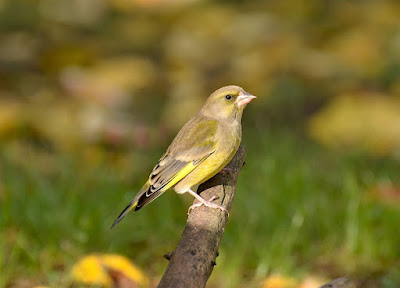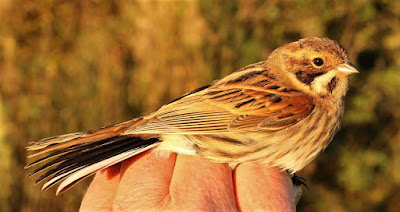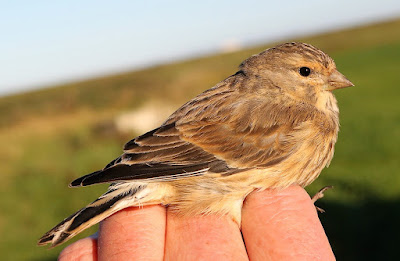Friday evening became another of those “Yes” or “No” occasions when every weather forecast was different to the next. Saturday morning might be too wet & windy for ringing but the timings of any wind or rain couldn’t agree. Weather charts for the coming week looked equally scary by way of wind, rain and glimpses of sunshine.
Saturday might be the single opportunity for a week or more to get a little ringing underway. A phone conversation with Andy left us agreeing about the possible window on Saturday, a last minute decision and a hurried breakfast.
When I sent a text at 0715 Andy replied that he was already on site so off I went into cold, cloudy skies but a zero wind and no rain. I quickly donned jacket, wellies and woolly hat and we set off across the thoroughly wet and puddled field to the depleted but still functioning seed plot and then the tree nets.
Soon we were up and running with first birds in the nets of a new Robin and yet another un-ringed Chiffchaff.
Chiffchaff
Linnets were quickly on the move east to west along the strip of seed plot, helped along the way by a singing Linnet below that served to entice some in for a feed. A zero on the wind scale changed quite quickly to 5, 10 and finally 15+, when trying to catch Linnet in a ballooning net became impossible. We had already lost out on four or more Linnets that jumped out as we approached. We packed in at 1030 following a reasonable catch and the help of slightly sheltered tree nets that escaped the worst of the now blustery and cold morning.
There seemed to be good numbers of Linnets around (up to 130), with a couple of long-winged females handled being contenders for ‘Northern’ Linnets. It was a shame that on this occasion the wind beat us again when another hour or two would have doubled our score of Linnets.
18 birds caught, all new. 8 Linnet, 3 Long-tailed Tit, 3 Greenfinch, 1 Great Tit, 1 Goldcrest, 1 Robin, 1 Chiffchaff.
Linnet
The blustery weather definitely didn’t help our birding but in no particular order we had sightings of 800+ Starlings, 100+ Linnet, 30 Greenfinch, 12 Long-tailed Tit, 8 Redwing, a single Buzzard, a male Sparrowhawk, 450+ Curlew, 250 Lapwing, 4 Whooper Swan, 1 Grey Heron, 1 Little Egret, 1 Raven.
Recent local sightings suggest a Snow Bunting winter may occur along our Lancashire coasts, a habitat with similarities to the species’ breeding areas.
The Snow Bunting is an Arctic specialist, with a circumpolar Arctic breeding range throughout the northern hemisphere with small isolated populations on a few high mountain tops south of the Arctic region, including the Cairngorms of Scotland.
This is another species that may have benefited from two seasons of lockdowns and reduced footfall and associated disturbance over its breeding spots, landscapes popular with summer walkers.
Snow Bunting
Snow Bunting
It’s a year or two since my last photographical rather than flyover Snow Bunting. The one above hung about one spot along Pilling shore for a few weeks in early November 2013.

























































.jpg)












